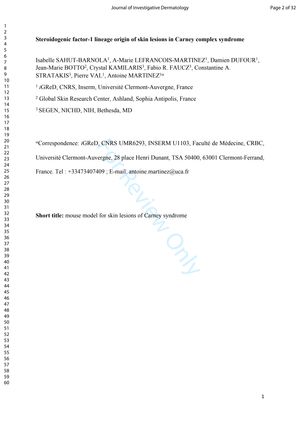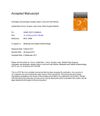Steroidogenic Factor-1 Lineage Origin of Skin Lesions in Carney Complex Syndrome
January 2022
in “
bioRxiv (Cold Spring Harbor Laboratory)
”

TLDR Skin lesions in Carney complex are likely caused by a specific group of skin cells that promote pigment production due to a genetic mutation.
The study investigates the pathogenesis of skin lesions in Carney complex (CNC), a rare genetic syndrome characterized by various tumors and skin manifestations such as lentigines, blue nevi, and cutaneous myxomas. The researchers found that inactivating mutations in the PRKAR1A gene, which disrupts the cAMP protein kinase A (PKA) signaling pathway, lead to skin pigmentation alterations when this mutation occurs in cells expressing Steroidogenic Factor-1 (SF-1). Through immunohistological and molecular analyses in mouse models, the study suggests that these skin lesions develop in areas with a high concentration of dermal melanocytes. The lesions are associated with a subset of dermal fibroblasts that, influenced by PKA signaling, produce signals that promote melanogenesis. The findings indicate that the skin lesions in CNC are likely due to the pro-melanogenic activity of a specific population of dermal fibroblasts that share an origin with the SF-1 lineage.


